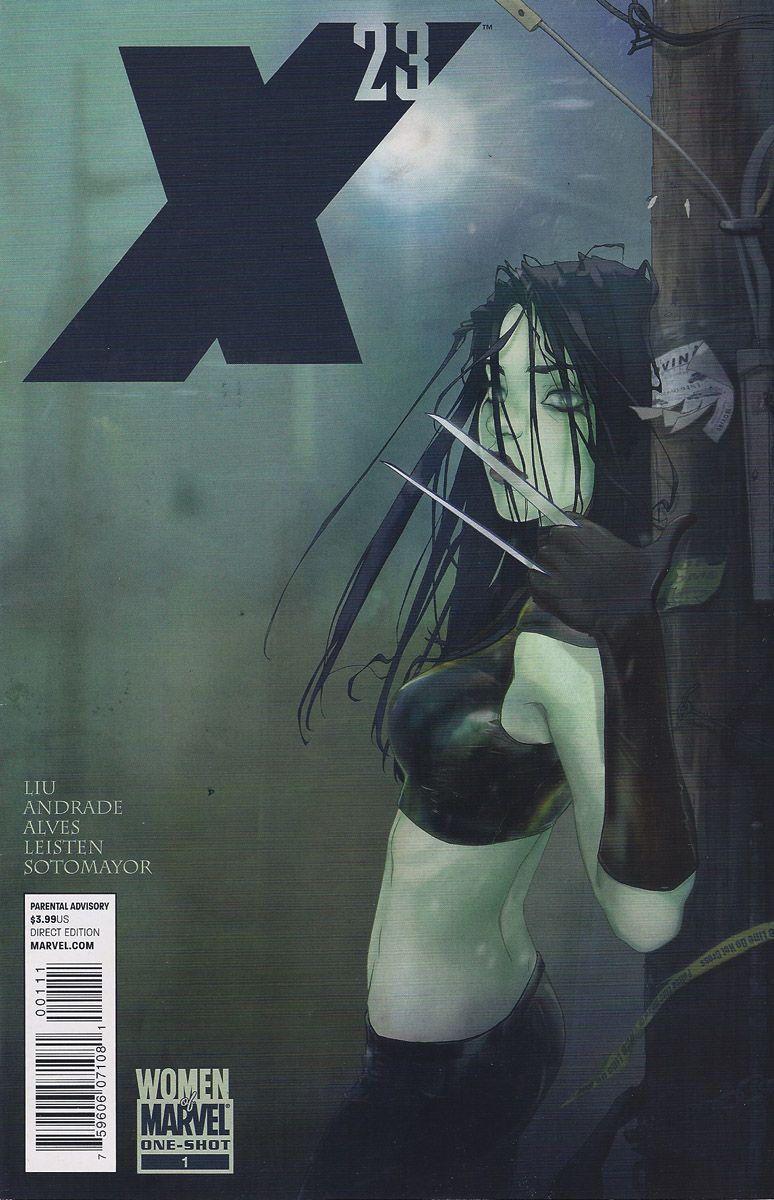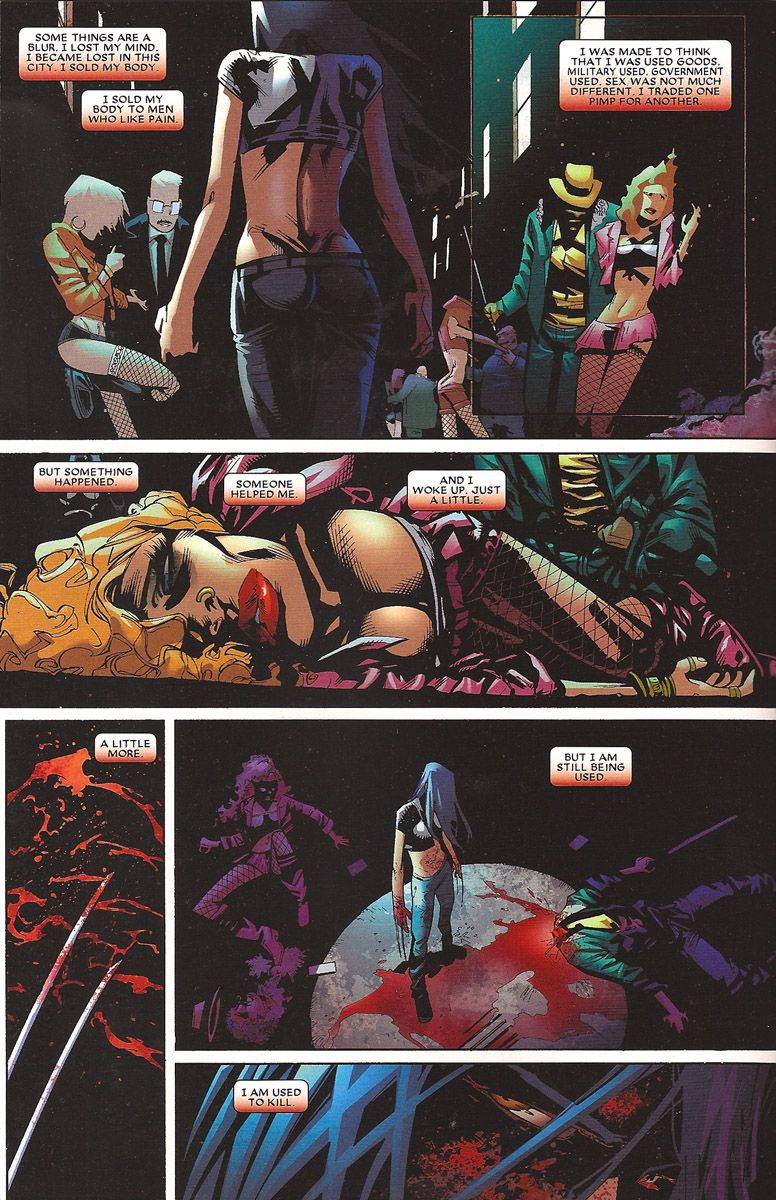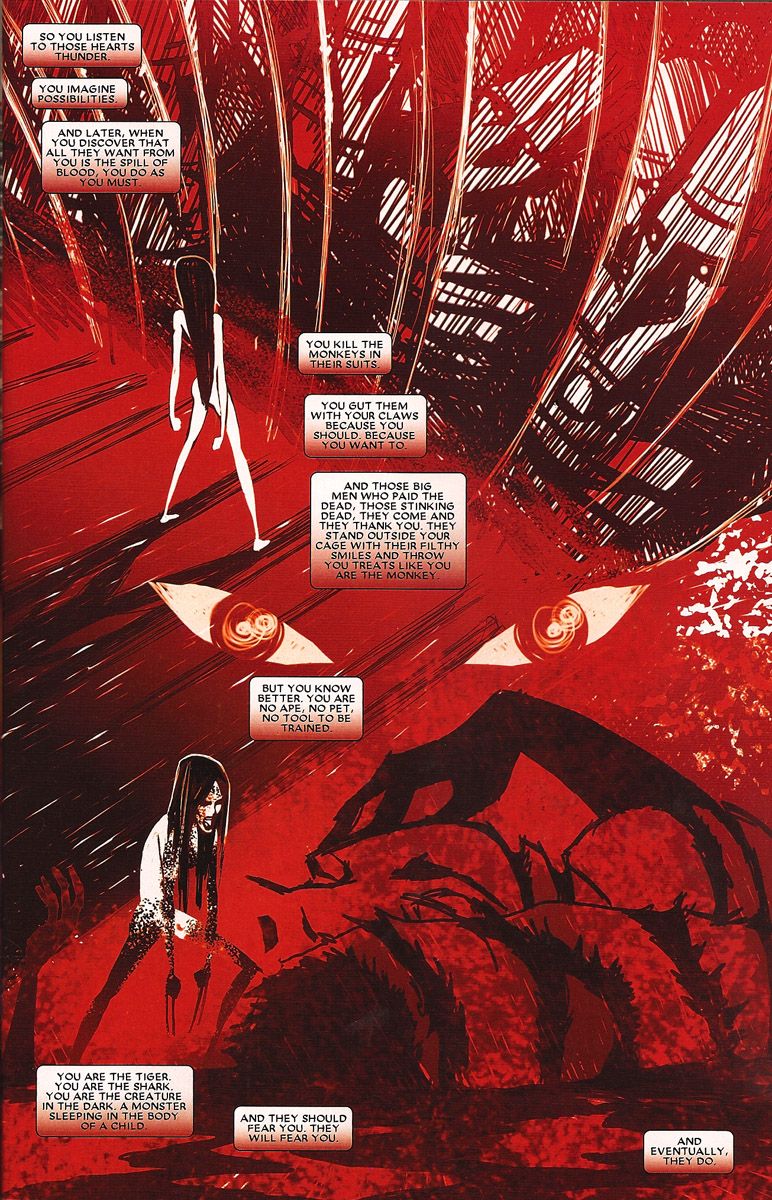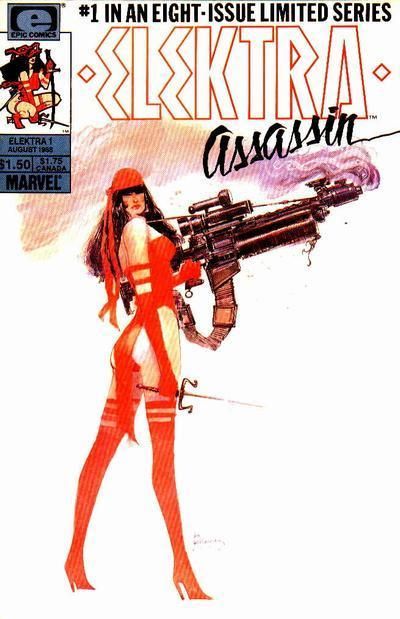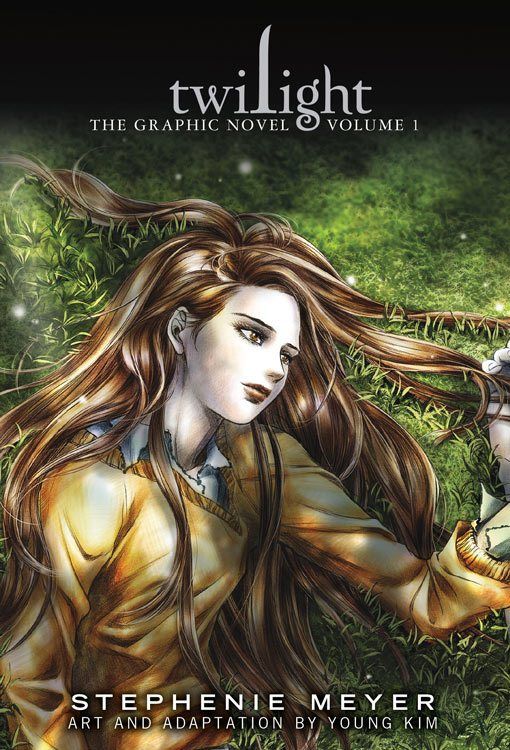I was genuinely psyched to do a review for the Marjorie Liu X-23 one-shot that came out this past week. I had
read CBR’s seven-page preview of the issue and was pretty impressed with what I saw.
In fairness, I know very little about X-23. I know she’s supposed to be a clone of Wolverine, and that on the surface, though not a bad idea in a way, it’s the kind of comics gimmick that generally makes me roll my eyes. I feel like I can actually hear the meeting in which a character like X-23 is created. “No she’ll be totally badass! Hardcore and unstoppable like Wolverine – but a hot young chick!” Plus, while I didn’t read the issues in question, and thus can’t comment specifically on how it was handled, it strikes me as a bad idea to make her a prostitute/victim of sex trafficking. I have a hard time imagining Wolverine (the original male version) being given the same treatment – which seems like a pretty standard example of Women In Refrigerators. I suppose it’s another issue entirely whether an X-Men comic book is capable of dealing with such delicate and important subject matter effectively. Having not read the issues and story in question however, I’ll put that aside for now.
While the character concept tends to grate on me before we even begin, that doesn’t mean that the actual character in the hands of a great writer can’t become fascinating and totally turn me around. In some ways, I felt like I should be the perfect reader for an X-23 one-shot as I come to the character pretty clean – a nice blank slate. Additionally, I’m interested in strong female characters, especially ones that have strong female writers at the helm (and Marjorie Liu has a solid reputation though I personally have read very little of her work). I found the cover cool looking, and as a bonus, done by a female artist (Alina Urusov). So I’m WANTING it to be good…I’m starting for a place of genuinely pulling for the book, despite my hesitation about the character.
Unfortunately, the book kind of falls apart as far as I’m concerned, after the first nine pages. The beginning is fairly strong, giving a few key details about X-23’s origin and back-story; we see her interact with both Wolverine and Jubilee which further explores the character – if only slightly; and we get a brief two page peek inside X-23’s well illustrated but fully messed up head. After that the book delves into some head trippy drama that is either us trapped in X-23’s head with nothing actually happening or equally cryptic interactions with the Nyx kids. The Nyx stuff reads as an in-joke/epilogue of sorts for the now defunct characters and I guess how much this works for you is largely dependent on whether you’re familiar with those characters or not. I’m not, so it mostly left me only more confused.
I feel like a one-shot should by definition be able to stand on its own. To introduce you to a character you maybe don’t know, to intrigue you about them, and if you’re really lucky, tell a great self-contained story that is good enough that you’re interested in searching out more about that character. But here I mostly just felt lost.
Considering this is a one-shot, the Nyx kids are given WAY too much page time. Although quite frankly, since they are having actual conversations and interactions with each other – rather than rambling incoherently and arguing in their own minds with a villain that I guess is Gamemaster – the Nyx stuff actually ends up more interesting than the X-23 stuff. Which is a problem in a book called X-23.
The end result of the book for me, as a newbie to X-23, is that she feels a lot like a messed up victim that is having trouble dealing with her trauma. Unfortunately, hero with a traumatic past is a story mined so many times that you have to find a really interesting way to do it if you’re going to go to that hoop again, and this is not so interesting. The fact that X-23 maybe has Gamemaster in her head…or is hallucinating him (it’s unclear which it is) would perhaps be interesting if this was a mini-series – or if it was dealt with in any real way within the book. But it isn’t. We are given a confusing and jumbled look inside X-23’s world but it teaches us almost nothing about the actual character. For my part I ended up wishing that we'd spent more time with the Nyx kids, whose story seemed a little more cohesive. I suppose I should admit that I’m not a big fan of story lines with characters that are “going crazy”, characters who speak and make no sense, who talk to themselves and are “tortured”. Sure it can be done well, but most of the time it isn’t and you just end up with real confusion. What little I could fully understand about the book felt kind of overwrought and unenthusiastically melodramatic. A bit like teenage angst, but bottled and without much plot.
Unfortunately, the art here does not help matters. The “real” stuff is done by Filipe Andrade and while I like the style enough - overall it was overly dark and hard to follow. I also found Andrade’s handling of the Nyx kids and even Wolverine and Jubilee more interesting and effective than X-23, reinforcing the kind of missed note of the entire book. I found the pacing to be a bit disjointed and sometimes it was just plain hard to read, making me yearn for really clear storytelling the same way I yearned for a clear plot. The “hallucination” stuff was done by Nuno Alves and initially I really liked it. I thought the lightly reminiscent Bill Sienkiewicz style was cool and very effective for what was trying to be conveyed. However it was overused, and not all the pages were equally as effective. By the end of the book it was as difficult to tell what was going on in Alves' pages as it was in Andrade’s pages.
Here are two samples - one of each. If you'd like to see more pages, please read the CBR preview linked to in the first paragraph:
Additionally, while I’ll take a slightly Sienkiewicz style any day as I’m a big fan, it drew an unfortunate parallel to another damaged badass with serious head problems – Elektra. And Elektra Assassin by Frank Miller and Bill Sienkiewicz is far superior to this one-shot in every way…I mean to the degree that it seems laughable to mention them in the same breath.
As I put this book down, frustrated and more than a little confused, I had to admit that maybe I’m just not the intended audience for this book. Maybe if this book could get into the hands of teen girls in high numbers (which it can’t), maybe they would love it. Maybe the angst driven skew of the book would really work for them (no offense teens – I was once one of you myself – and at that age we tend to skew that way - I think it’s only natural).
I’m constantly ranting and raving, sometimes here, sometimes just in my head, that mainstream comics needs to reach out to girls – that they are ignoring a huge wealthy demographic that reads books in record numbers and they are doing so to their own peril. So maybe that’s what this book is intended to be? Maybe it’s impossible for my 33 year-old self to “get it” and not find it pedestrian and cliché because it’s not designed “for me” in the first place. Maybe I'm not supposed to like it. Maybe me liking it would mean that teenage girls wouldn't. I'm not sure.
However, even if teen girls would find something remarkable in this book, how would they find this book or others like it? They won’t. The same way girls did not find the Minx line. So I’m left feeling that this book fails before it even begins because a 33 year-old that is highly interested in female characters and female creators didn’t like it and gets the feeling that it wasn’t even intended for her – and I expect adult males will for the most part feel similarly. So the book doesn’t do well and/or garner any critical acclaim and we’re back to square one with “girls don’t read comics”.
So even when Marvel and DC don’t proclaim it themselves, and in fact, seem to be actively producing material that girls might like…it’s still somehow where we end up.
HOW do we solve this problem?
I had this fairly positive (naïve?) post I was working on for the column that was all about DC and Marvel needing to make a huge push to get girls into comic book stores – or alternatively to find a way to get comics into regular bookstores in big numbers. I made an argument that was mostly passion and personal belief that boiled down to lofty but unproven sentiments like ‘fortune favors the brave’ and ‘if you build it they will come’.
But then I read X-23 and had to sadly admit that no, they won’t come. And if you can’t make an excellent product that is going to be widely read and loved by adults – both male and female – and also be appealing to teen girls, then no, you’ll never be able to keep building and creating and wait for them to eventually figure it out. For some reason the big two (and maybe beyond the big two?) don’t seem to know how to write books that will pull in adult audiences of both genders and also appeal to teen girls – even though they seem to know how to do this for teen boys. I don't really know what the x factor is in crossover literature. You see it happening in mega hits like Harry Potter and Twilight - books that capture the hearts of both young and old and actually change the industry with their success, but I don't know what the comics equivalent would be for girls.
I sometimes think Marvel or DC should have pulled out all the stops (and given up creative control/ownership)
in a massive bid to adapt the rights of the YA smash hit Twilight and then adapted it as single issues available only in comic stores. At the same time, they should have approved several female teen friendly books and pushed them through with excellent creative teams, so that they could shelve those books right next to a book they knew a female teen audience would come looking for in droves. Then they should have promoted and marketed the hell out of it. It would have been a huge financial risk, but one with the potential to pay off in the form of a massive new crop of young female comics readers - all new money that comics has never seen before with any regularity. Because maybe the girls would have come. Maybe they would have come like they did to the San Diego Comic Con – in massive numbers that pissed off long time fanboys. Not all of them would have stayed around for the other stuff of course, but some of them would have, some of them would have had similar experiences to what I had upon first entering a comic book store at 16. The experience of instantly knowing comics would be a lifelong love affair. Because most girls seem to need a gateway drug to comics in a way that most boys don't seem to. The X-Men cartoon was my gateway drug - and without it I don’t know that I ever would have discovered comics. If Twilight – or whatever the "next big thing" is - has to be other girls 1992 X-Men cartoon equivalent – then so be it.


